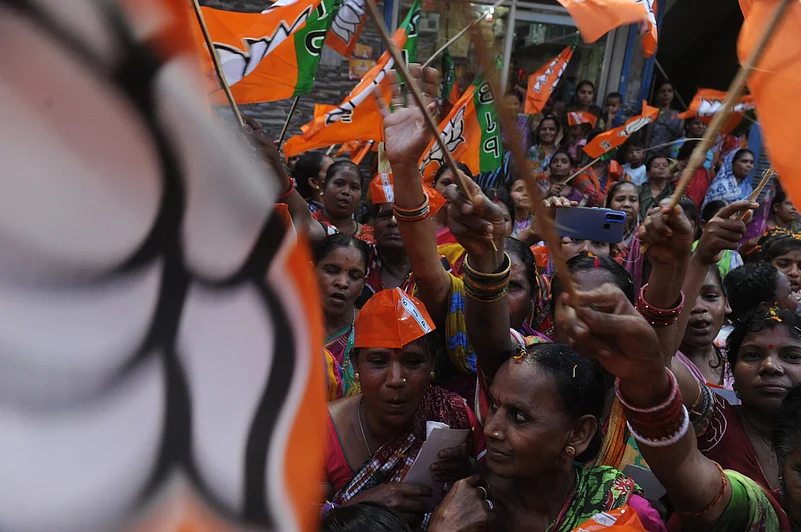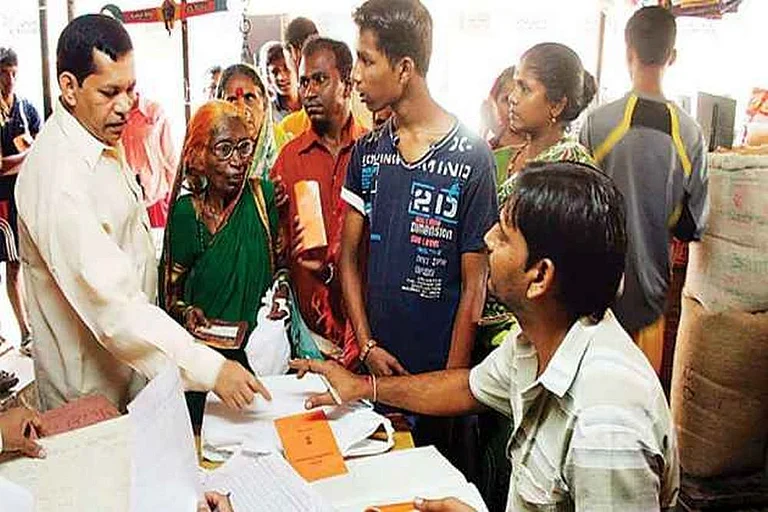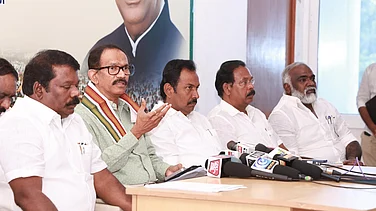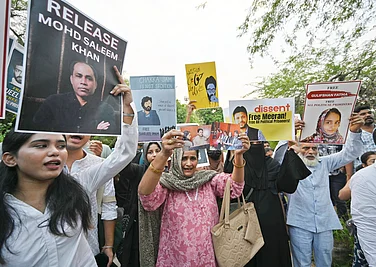Even as the BJP's Lok Sabha tally has been reduced significantly, a saving grace for the party is Odisha. The saffron party has swept the simultaneous Lok Sabha and Assembly elections in the State.
In a resounding victory, the BJP has won an astounding 20 of the 21 Lok Sabha seats and stormed to power by winning 78 out of 147 seats in the legislative Assembly, marking the end of 24-year-reign of Naveen Patnaik.
Such was the washout of the BJD that the regional outfit drew blank in Lok Sabha. Other highpoints of Odisha verdict include the BJP winning 11 of the 13 Assembly constituencies in Ganjam, the home district of the outgoing Chief Minister who somehow scraped through from Hinjili, his traditional Assembly constituency. Much to the chagrin of the BJD that Patnaik has lost from Kantabanji - the second Assembly constituency he contested - by a whopping margin of over 16,000 votes.
Every electoral verdict is multi-factorial as there is no silver bullet answer and so is Odisha verdict. Following are the six key reasons that helped the BJP's sweep in Odisha.
Anti-incumbency wave: The pattern of voting shows that there was a massive anti-incumbency wave against the Naveen Patnaik government. Over the years, wave of corruption, rampant misgovernance, crumbling law and order in the State has built the anti-incumbency brick by brick. Issues like mismanagement of Puri Jagannath Temple, plight of farmers, sufferings of the migrant labourers, rising crime against women, rising unemployment etc. further strengthened the palpable anti-incumbency.
The missing Chief Minister: There was a huge disconnect between the government and governance as Chief Minister Naveen Patnaik chose to remain indifferent. He effectively outsourced the government, leaving it in the hands of his Personal Secretary V Karthikeyan Pandian, a Tamil Nadu born 2000 batch IAS officer who later joined the BJD.
The Pandian factor: This is an open secret that Pandian used to run the Naveen Patnaik government from the Chief Minister's Office (CMO) through a coterie of non-Odia bureaucrats.
A non-existent department called 5T (teamwork, technology, transparency, transformation and time limit) was created for Pandian and he was made its secretary with an additional charge. Pandian went on a whirlwind tour across the State on the pretext of listening to people's grievances, but actually ended up canvassing for the BJD. Senior leaders of the BJD, including Ministers, were seen arranging meetings for Pandian, pitching tents and even controlling traffic.
As the BJP targeted Pandian, the bureaucrat had to resign from civil service and officially joined the BJD. By that time Pandian was widely considered as a hate figure in the State.
In this election, Pandian was doing the heavy lifting for the party riding on Patnaik's soldiers, essentially suggesting that he was BJD's "Campaigner-in-Chief", while all senior leaders of the party were made to stay away from electoral management. This has angered the votes both inside and outside the BJD.
The Manmohan factor: In fact, it was none other than the BJD which had sensed the anti-incumbency against its own government. That was precisely the reason, the regional outfit had wanted to stitch an an alliance with the BJP. This would have been the first instance in independent India when a ruling party would have gone into an alliance with the main opposition party.
But it was Odisha BJP president Manmohan Samal, who was vociferous against such a sinister idea. Samal had succeeded in convincing the Central leadership that an alliance with BJD would severely damage the BJP's organisational base and subsequently the Central BJP leadership had dumped the BJD at the altar. This had boosted the morale of the BJP cadre in Odisha.
Samal, a consummate politician, had all along maintained that enthusiasm for 'parivartan' (change) was palpable in Odisha and the common men and women were fighting the elections for the BJP. Samal's confidence finally bore fruits as the BJP swept the simultaneous Lok Sabha and Assembly elections.
Odia Asmita: BJP's campaign theme: Election is all about right strategies and tactics to beat the opponent. This time the BJP's entire poll campaign in Odisha was themed around 'Odia asmita' (Odia pride). Usually, regional parties fight for regional issues, regional aspirations and regional pride. But Odisha elections witnessed a complete departure of sorts as national party BJP made Odia asmita its main poll plank at a time the BJD, a regional outfit, was facing the allegations of strangling the dignity and pride of Odisha.
Through a blistering campaign, the BJP created a narrative that Odia pride was facing a danger by emphasising that the State government had been outsourced to Tamil babu Pandian.
The BJP's campaign drive: In Odisha, the BJP launched an aggressive campaign drive, spreading over a month, with Prime Minister Narendra Modi himself leading from the front. PM Modi addressed eight rallies across the State and held two roadshows. The party launched a carpet bombing campaign with Union Home Minister Amit Shah, BJP national president JP Nadda, Union Defence Minister Rajnath Singh, Uttar Pradesh Chief Minister Yogi Adityanath and Assam Chief Minister Himanta Biswa Sarma addressed several poll rallies and ripped into the Naveen Patnaik government.
The Prime Minister set the tone of the BJP's campaign at his first election rally at Behrampur when he stated that the BJD government would cease to exist on June 4 and a BJP Chief Minister would take oath on June 10. This resonated deep with the voters.

























